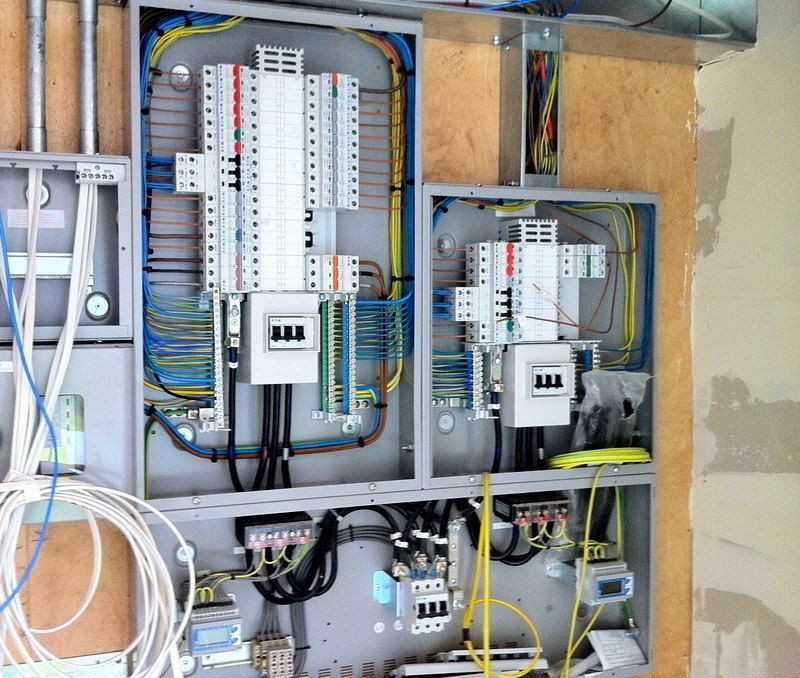Debunking Electric Installment: Recognizing Codes and Rules for a Lawful and Safe Arrangement
In the realm of electrical installment, adherence to codes and laws is critical to make sure both legitimacy and security. The trip to demystifying electrical installment goes beyond mere experience with laws; it demands a profound understanding of exactly how to apply risk-free electric practices successfully.
Importance of Electrical Codes
The adherence to electric codes is essential in making sure the safety and reliability of electric installments. Electrical codes work as a set of criteria and standards that dictate the proper style, installment, and upkeep of electric systems. These codes are established to reduce the threat of electric hazards, fires, and other security worries that might emerge from faulty electrical job.

Moreover, electrical codes are regularly upgraded to incorporate brand-new modern technologies, best techniques, and safety and security procedures. Staying upgraded with these codes is vital for professionals in the electric industry to make sure that their work satisfies the current safety and security standards. Inevitably, the significance of electric codes hinges on developing a protected and reliable electrical framework that benefits both people and communities.
Secret Regulations for Security
Numerous fundamental guidelines govern the security standards in electrical installations. One crucial policy is the National Electric Code (NEC), which provides guidelines for secure electrical layout, installation, and assessment to safeguard individuals and residential or commercial property from electric risks. The NEC covers elements such as circuitry techniques, grounding, overcurrent security, and tools installation to make sure a secure electrical system.
An additional vital regulation is the Occupational Security and Wellness Administration (OSHA) requirements, which concentrate on the safety of workers entailed in electrical setups (BRE Automation Australia). OSHA laws consist of requirements for appropriate training, safety and security treatments, and personal protective devices to look what i found stop work environment crashes and injuries
In Addition, the International Electrotechnical Commission (IEC) standards intend to harmonize electrical setup guidelines on a worldwide range. These criteria address problems like electrical devices security, electromagnetic compatibility, and power effectiveness to advertise harmony and safety and security in electric installations worldwide.
Compliance with these essential policies is important to ensure the safety and security and validity of electrical setups, safeguarding both individuals and residential property from the risks associated with electricity.
Recognizing National Electric Code
Key guidelines such as the National Electrical Code (NEC) give necessary standards for secure electric style, installment, and inspection to guarantee the security of people and residential property from electric risks. The NEC, also understood as NFPA 70, is a thorough collection of requirements for electric installations that are upgraded every 3 years. It is developed by the National Fire Defense Association (NFPA) and is commonly taken on throughout the United States.
The Get the facts NEC covers different facets of electrical work, consisting of wiring techniques, grounding, overcurrent defense, and equipment installation. It intends to guard people and building by dealing with possible threats related to electrical systems. Compliance with the NEC is commonly enforced by regional authorities having jurisdiction (AHJs), such as constructing code officials and inspectors.
Comprehending the NEC is vital for electric professionals, designers, and examiners to make certain that installments meet the required security needs. By sticking to the NEC standards, professionals can help stop electric accidents and make sure the integrity of electric systems in residential, commercial, and commercial setups.

Compliance With Regional Building Regulations
Understanding and sticking to neighborhood building codes is necessary for ensuring the security and conformity of electric installations within a certain territory. These codes outline certain requirements for electrical installments, such as the kind of wiring to be utilized, positioning of electrical outlets, grounding techniques, and lots abilities.
When it comes to electric setups, failing to conform with regional structure codes can result in severe repercussions. Non-compliant installations may posture safety and security threats, raise the danger of electrical fires, and lead to costly fines or lawful concerns.
Ensuring Safe Electrical Practices
Exercising rigorous adherence to developed security procedures is vital in the area of electric installments to minimize possible dangers and make sure the wellness of individuals and buildings. Safety and security in electric job includes different elements, starting with the proper training of personnel entailed in setup, maintenance, and repair work. By prioritizing secure techniques, electric setups can work efficiently while minimizing the likelihood of accidents or damages.
Final Thought
Finally, adherence to electrical codes and laws is vital for guaranteeing the safety and validity of electric installments. Understanding the National Electric Code and conformity with neighborhood building go regulations are essential for a secure configuration. By following these standards and practicing secure electrical techniques, individuals can protect against prospective hazards and make sure the appropriate performance of their electric systems.